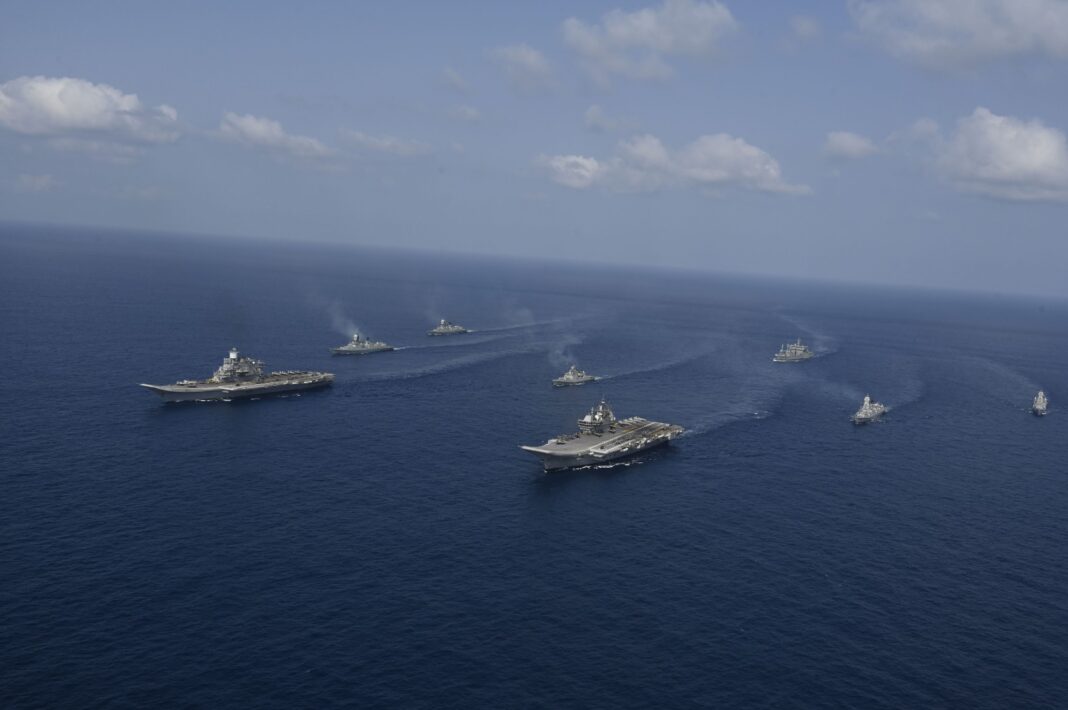New Delhi, June 11: In a significant display of its combat capabilities to both allies and adversaries, the Indian Navy recently executed a large-scale operation in the Arabian Sea, featuring the simultaneous deployment of two aircraft carriers, INS Vikramaditya and INS Vikrant.
This massive exercise, which also involved numerous frontline warships, submarines, and over 35 combat planes, aimed to assert India’s position as a net security provider in the Indian Ocean region.
The event marked the first-ever joint exercise of the two aircraft carriers following the induction of the indigenous INS Vikrant in September.
Termed the twin-carrier Carrier Battle Group (CBG) drills, the operation showcased the formidable sea-based air power of the Indian Navy and underlined its commitment to safeguarding national interests.
Commander Vivek Madhwal, the Indian Navy Spokesperson, described the exercise as a “powerful testament” to the Navy’s capabilities in ensuring sustained air operations across vast maritime expanses. Through the successful demonstration of two-carrier battle group operations, the Indian Navy reaffirmed the pivotal role of sea-based air power in maintaining maritime superiority.
The strategic location chosen for the exercise holds significance, as it was conducted in close proximity to China’s only overseas naval base in Djibouti and to Gwadar, a China-built port in Pakistan and a potential Chinese naval base.
This location serves as a direct message to China, emphasizing India’s commitment to securing its strategic interests in the Indian Ocean Region.
India, as one of the six global powers capable of indigenously designing and constructing aircraft carriers, is further expanding its naval capabilities. The planned construction of INS Vishal, a third aircraft carrier to be built by Cochin Shipyard Limited, will enable the Indian Navy to extend its presence as a blue water navy in overseas waters.
However, the Indian Navy faces institutional, operational, and financial challenges in establishing naval superiority in the Indian Ocean and beyond. Funding constraints and a mismatch between modernization aspirations and implementation speed have hampered progress.
Most importantly, China‘s growing presence, demonstrated by its network of dual-use ports in the Indian Ocean Region, poses a formidable challenge to Indian naval dominance.
Nevertheless, strategic experts have analyzed that India is overcoming these challenges through a push for modernization, increased budgetary support, indigenous technology development through initiatives like Make in India, the expanding network of naval bases in the Indian Ocean, and cooperation with allied naval powers in the QUAD and beyond.
These efforts can enable India to establish its might in the Indian Ocean Region and even extend its influence into the North and Central Pacific region.
The evolving dynamics between these two maritime powers in the region continue to captivate observers, and the developments that unfold in this clash of titans will undoubtedly shape the future of the Indian Ocean and beyond.






